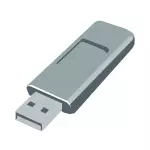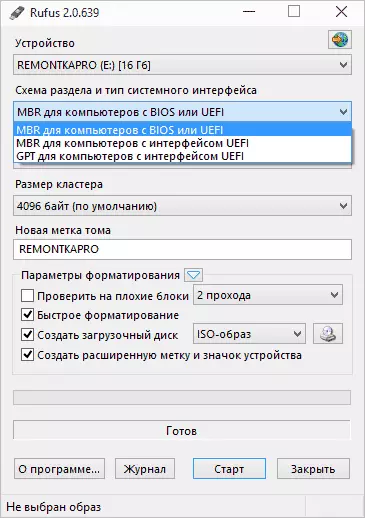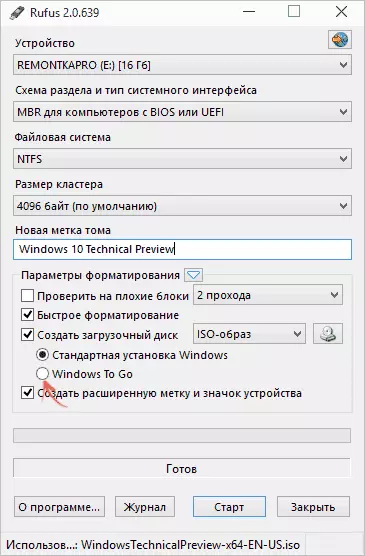
The main difference between RUFUS is that the user can easily record the installation USB drive to download on computers with UEFI and BIOS, installations on the GPT and MBR sections styles by selecting the desired option directly in the program window. Of course, this can be done independently, in the same WinsetupFromusB, but it will already require some knowledge of what is what and how it works. Update 2018: A new version of the program has been released - RUFUS 3.
Note: The following will be about using the program in relation to the latest Windows versions, however, using it, you can easily make boot USB Ubuntu drives and other Linux distributions, Windows XP and Vista, as well as a wide variety of system recovery and passwords, etc. .
What's new in Rufus 2.0
I think, for those who decided to try in the work or install the newly released Windows 10 Technical Preview, Rufus 2.0 will be an excellent helper in this matter.
The program interface has not changed too much, as before all actions are elementary and understandable, signatures in Russian.
- Choose a flash drive to which entry will be made
- Section scheme and type of system interface - MBR + BIOS (or UEFI in compatibility mode), MBR + UEFI or GPT + UEFI.
- After putting the "Create a boot disk" mark, select an ISO image (and a disk image, for example, VHD or IMG).

Perhaps someone from readers Paragraph number 2 about the section scheme and the type of system interface does not mean anything, and therefore I will briefly explain:
- If you install Windows to an old computer with a regular BIOS, you need the first option.
- If the installation takes place on a computer with a UEFI (a distinctive feature is a graphical interface when entering into a BIOS), then for Windows 8, 8.1 and 10, you most likely fit the third option.
- And to install Windows 7 - second or third, depending on which partition scheme is present on the hard disk and whether you are ready to convert it to GPT, which is preferable to date.
That is, the correct choice allows you to not encounter a message that the installation of Windows is not possible, since the selected disk has the GPT sections style and other options for the same problem (and in the event that they encounter this problem quickly).

And now about the main innovation: in RUFUS 2.0 for Windows 8 and 10, you can make not only the installation drive, but also the Windows to Go flash drive, from which you can simply start the operating system (booting from it) without installing on a computer. To do this, after selecting the image, simply mark the corresponding item.
It remains to click "Start" and wait for the completion of the preparation of the loading flash drive. For a regular distribution and original Windows 10, the time is just over 5 minutes (USB 2.0), if the Windows to Go drive is required, then more - the time comparable to the necessary operating system to install the operating system (because in essence, Windows is installed on USB flash drive).
How to use rufus - video
I also decided to record a short video, which shows how to use the program where the RUFUS download and briefly describes where and what to choose to create an installation or other bootable drive.
You can download the RUFUS program in Russian from the official site https://rufus.ie, on which there is both the installer and the portable version. No additional potentially unwanted programs at the time of writing this article in RUFUS.
